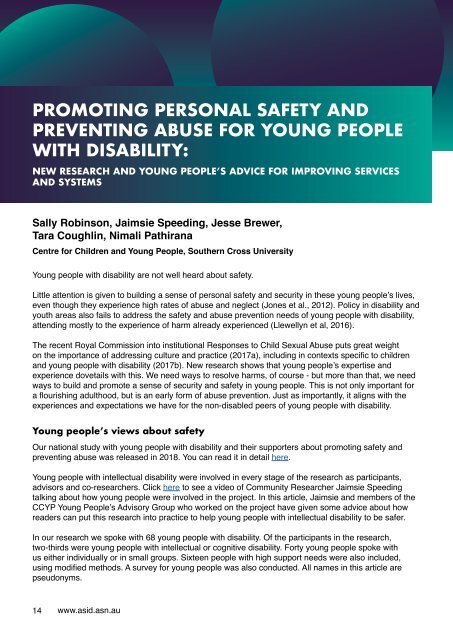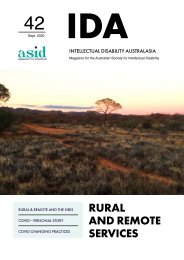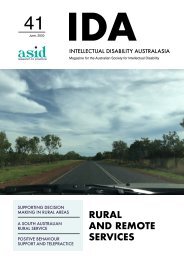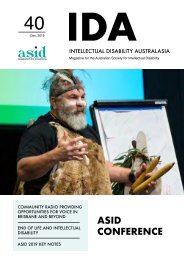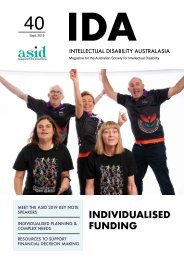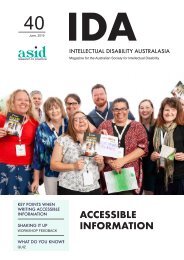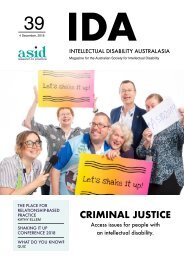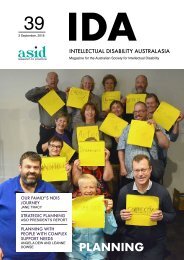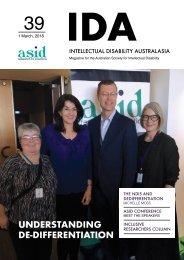You also want an ePaper? Increase the reach of your titles
YUMPU automatically turns print PDFs into web optimized ePapers that Google loves.
PROMOTING PERSONAL SAFETY AND<br />
PREVENTING ABUSE FOR YOUNG PEOPLE<br />
WITH DISABILITY:<br />
Descriptive Sub-title Descriptive Sub-title Descriptive<br />
Sub-title.<br />
NEW RESEARCH AND YOUNG PEOPLE’S ADVICE FOR IMPROVING SERVICES<br />
AND SYSTEMS<br />
Sally Robinson, Jaimsie Speeding, Jesse Brewer,<br />
Tara Coughlin, Nimali Pathirana<br />
Centre for Children and Young People, Southern Cross University<br />
Young people with disability are not well heard about safety.<br />
Little attention is given to building a sense of personal safety and security in these young people’s lives,<br />
even though they experience high rates of abuse and neglect (Jones et al., 2012). Policy in disability and<br />
youth areas also fails to address the safety and abuse prevention needs of young people with disability,<br />
attending mostly to the experience of harm already experienced (Llewellyn et al, 2016).<br />
The recent Royal Commission into institutional Responses to Child Sexual Abuse puts great weight<br />
on the importance of addressing culture and practice (2017a), including in contexts specific to children<br />
and young people with disability (2017b). New research shows that young people’s expertise and<br />
experience dovetails with this. We need ways to resolve harms, of course - but more than that, we need<br />
ways to build and promote a sense of security and safety in young people. This is not only important for<br />
a flourishing adulthood, but is an early form of abuse prevention. Just as importantly, it aligns with the<br />
experiences and expectations we have for the non-disabled peers of young people with disability.<br />
Young people’s views about safety<br />
Our national study with young people with disability and their supporters about promoting safety and<br />
preventing abuse was released in <strong>2018</strong>. You can read it in detail here.<br />
Young people with intellectual disability were involved in every stage of the research as participants,<br />
advisors and co-researchers. Click here to see a video of Community Researcher Jaimsie Speeding<br />
talking about how young people were involved in the project. In this article, Jaimsie and members of the<br />
CCYP Young People’s Advisory Group who worked on the project have given some advice about how<br />
readers can put this research into practice to help young people with intellectual disability to be safer.<br />
In our research we spoke with 68 young people with disability. Of the participants in the research,<br />
two-thirds were young people with intellectual or cognitive disability. Forty young people spoke with<br />
us either individually or in small groups. Sixteen people with high support needs were also included,<br />
using modified methods. A survey for young people was also conducted. All names in this article are<br />
pseudonyms.<br />
14 www.asid.asn.au


